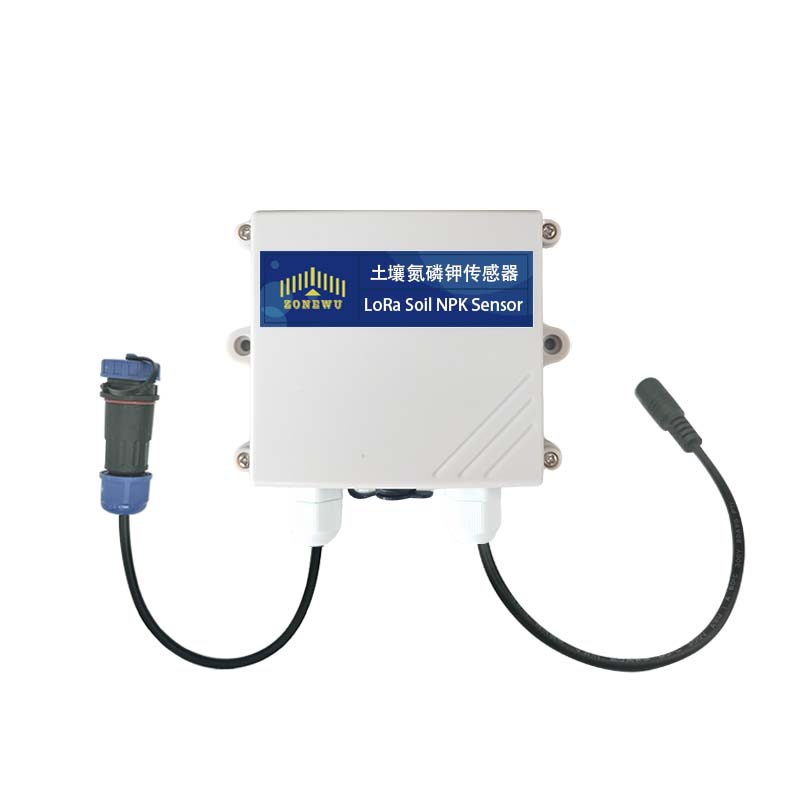In the current booming development of precision agriculture, LoRaWAN Soil NPK Sensor, as a cutting-edge soil detection device, is gradually becoming a powerful assistant to improve agricultural production efficiency and quality. Taking the LoRaWAN Soil NPK Sensor launched by ZONEWU (website: www.zonewusensor. com) as an example, it focuses on precise detection of nitrogen (N), phosphorus (P), and potassium (K) content in soil, providing key data support for scientific fertilization and healthy crop growth.

1、 Function Introduction
1. Accurate detection
ZONEWU's LoRaWAN Soil NPK Sensor utilizes advanced electrochemical sensing technology to deeply penetrate the soil and perform high-sensitivity detection of nitrogen, phosphorus, and potassium, the three main nutrients. Its detection accuracy is extremely high, up to the ppm level, ensuring that the data obtained by farmers can truly reflect the soil nutrient status, thereby avoiding resource waste and environmental pollution caused by improper fertilization. For example, in a corn plantation, the sensor can accurately detect subtle changes in nitrogen content in the soil, providing farmers with precise basis for adjusting nitrogen fertilizer application. The company has greatly improved the accuracy and stability of detection by optimizing the electrode materials and sensing algorithms of the sensors. Even in complex soil environments, it can stably output reliable data.
2. Long distance communication
With the help of LoRaWAN low-power wide area network technology, this sensor has excellent communication capabilities. In open terrain, its communication distance can reach several kilometers, which means that in large areas of farmland, stable data transmission can be achieved without deploying a large number of gateway devices. Even in remote mountainous farmland, detection data can be easily transmitted in real-time to the data management platform, greatly reducing data transmission costs and complexity. In product development, Zhongwu Zhilian Technology has deeply customized the LoRaWAN communication module, enhancing its signal anti-interference ability and further ensuring the efficiency and stability of data transmission, allowing data to be delivered in a timely manner in various complex environments.
3. Low power operation
The sensor adopts a low-power design concept and is equipped with a high-performance battery that can work continuously for months or even years on a single charge. This is crucial for equipment deployed in the field for a long time, reducing manual maintenance frequency, lowering usage costs, and ensuring continuous and stable monitoring of soil nutrients throughout the entire crop growth cycle. Through innovative power management technology, IoT intelligently adjusts the working status of sensors, ensuring normal operation of detection and data transmission while minimizing energy consumption and extending battery life.
2、 Application scenarios
1. Intelligent fertilization decision-making
Farmers can develop personalized fertilization plans based on data feedback from LoRaWAN Soil NPK Sensors. When sensors detect a lack of phosphorus in the soil, farmers can increase the application of phosphorus fertilizer in a targeted manner to avoid blind and excessive fertilization. Through this precise fertilization method, not only can fertilizer utilization efficiency be improved and production costs reduced, but also the pollution of soil and water caused by fertilizers can be reduced, protecting the ecological environment. The data management platform supported by IoT can generate detailed fertilization recommendation reports for farmers based on sensor data, visually displaying the current status of soil nutrients and suitable fertilization plans, making it easy for farmers to make scientific decisions.
2. Crop growth monitoring
The nutrient status of soil directly affects the growth trend of crops during their growth process. By continuously monitoring soil NPK content, farmers can promptly identify soil nutrient imbalances, take measures in advance to adjust, and ensure the healthy growth of crops. For example, during the critical period of rice growth, sensors can provide real-time feedback on changes in soil nutrients, helping farmers respond promptly to nutrient deficiencies or surpluses, and improving rice yield and quality. The sensors of IoT, combined with its developed mobile applications, allow farmers to view soil nutrient data during crop growth anytime and anywhere, conveniently and quickly grasp field conditions, and intervene in crop growth status in a timely manner.
3. Agricultural big data collection
The widespread application of numerous LoRaWAN Soil NPK sensors in different farmland can collect a large amount of soil nutrient data. These data can be integrated and analyzed to form a regional soil nutrient distribution map, providing strong data support for agricultural research and policy-making, and promoting the intelligent and scientific development of the entire agricultural industry. With its powerful data processing capabilities, IoT aggregates, cleans, and analyzes sensor data scattered across the country, providing comprehensive and accurate soil nutrient big data reports for agricultural research institutions, government departments, and others, helping to facilitate macro decision-making and scientific breakthroughs in the agricultural field.